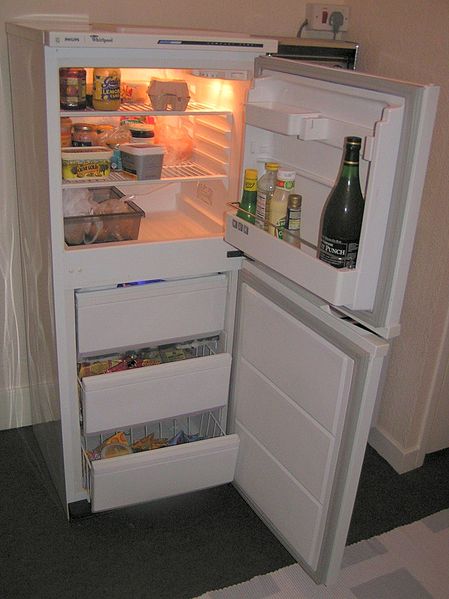Now you have gained a familiarity with some important concepts, such as internal energy, heat, work and the importance of defining your system. But we need to explore these ideas more closely.
What Do We Know?
Before discussing the energy transfers in a refrigerator, we were careful to first define our system and distinguish it from the surroundings. Why is this so important?
Why Should We Care?
In our example, we defined the system to be the refrigerant fluid. However, what if we defined the system differently? By changing our definition, we would then be concerned with different energy transfers.
Suppose the system is defined as the entire refrigerator, including the air inside the refrigerator. Our
 conclusions based on this definition will be different than what we concluded when the refrigerant fluid was the system. When the fluid was the system, we said that the system absorbed thermal energy from the surroundings at the evaporator. However, with the alternative definition that includes the air inside the refrigerator, we would conclude that the system does not absorb energy as heat from the surroundings at the evaporator because the air in the refrigerator is now part of the system. Rather, when energy is absorbed at the evaporator, we would conclude that energy is simply being transferred from one part of the system to another.
conclusions based on this definition will be different than what we concluded when the refrigerant fluid was the system. When the fluid was the system, we said that the system absorbed thermal energy from the surroundings at the evaporator. However, with the alternative definition that includes the air inside the refrigerator, we would conclude that the system does not absorb energy as heat from the surroundings at the evaporator because the air in the refrigerator is now part of the system. Rather, when energy is absorbed at the evaporator, we would conclude that energy is simply being transferred from one part of the system to another.
But suppose the air inside the refrigerator is not included in the definition of the system and the system is only the refrigerator. Assuming our fridge is exactly the same as in previous discussions, with this definition, the system does absorb thermal energy from the surroundings at the evaporator, because the air inside the refrigerator is now part of the surroundings. This conclusion is the same as the conclusion reached when the system was the refrigerant fluid. However, defining the system only as the refrigerator itself, rather than the refrigerant fluid, still results in an important difference. When the system is the refrigerant fluid, energy enters the system as work using the kinetic energy of the compressor. But, if the system is the refrigerator, energy enters the system as work in a different way. Work is performed on the refrigerator, not by the compressor, but by the wiring within the electrical socket which the refrigerator is plugged into. The socket provides electrical energy to the refrigerator which is used to do work on the system.